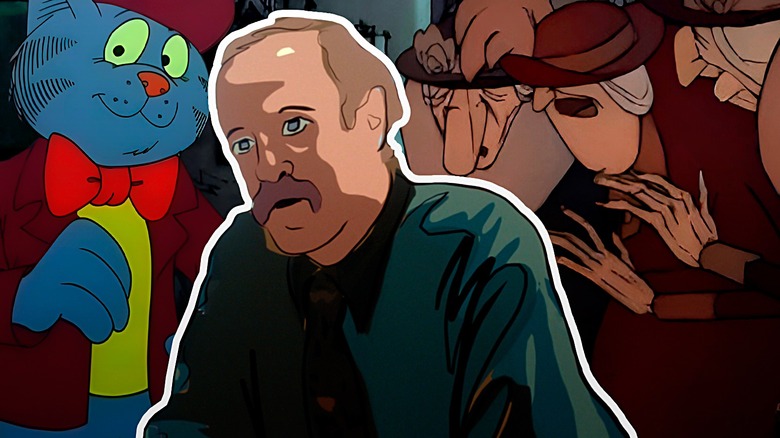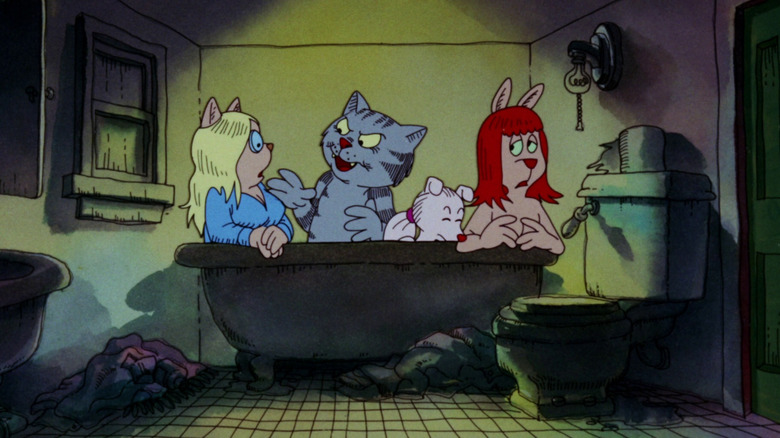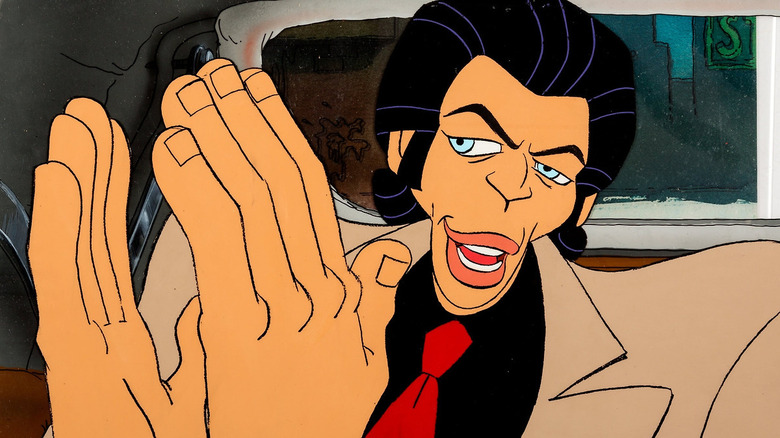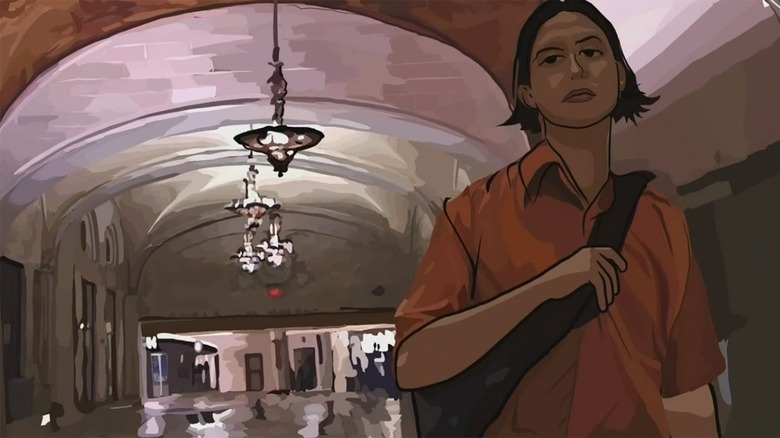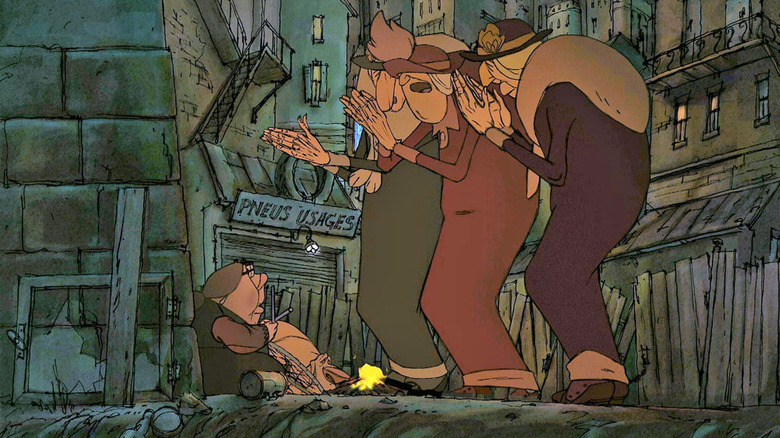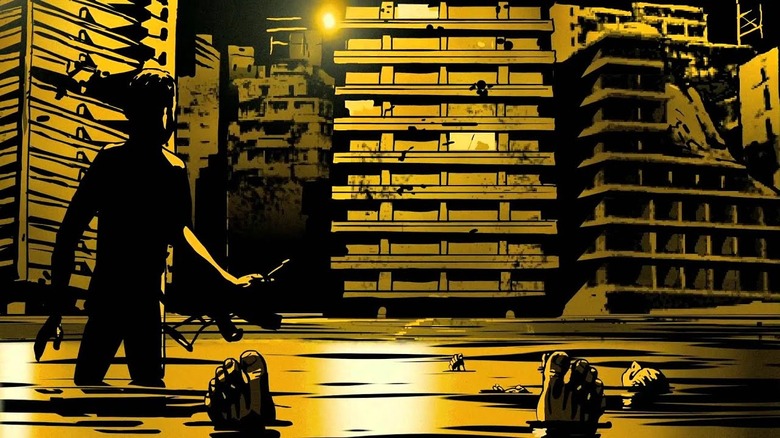5 Animated Movies With Nudity & Adult Themes That Parents Should Know About
Just because a film is animated doesn't necessarily mean it's safe for kids. Beyond some of the cleverer animated films in recent years (like most of Pixar's catalog) which contain jokes for adults as well as kids, there's a whole stockpile of animated entertainment that's definitively not for young eyes.
Lately, the trend of cartoons aimed at a firmly adult audience has largely confined itself to the small screen — think "Archer," "Bob's Burgers," or "BoJack Horseman," all of which would be inappropriate, baffling, and way too depressing for children to enjoy. With those aside, though, creators have been making animated films meant for grown-ups for quite some time now, and while some aren't exactly classics, others have gone on to charm audiences and even win Academy Awards.
So if you're a parent or looking after little ones, you might want to check and make sure the animated flick you're about to queue up is age-appropriate. Here are a handful of films that tackle adult themes not meant for kids.
Fritz the Cat (1972)
Ralph Bakshi earns two spots on this list, starting with his infamous raunchy 1972 cartoon "Fritz the Cat." Based on a running comic strip by cartoonist R. Crumb, "Fritz the Cat" centers around its title character (voiced by Skip Hinnant) throughout a series of bawdy misadventures. Set in a world populated by anthropomorphic animals, the movie follows the titular Fritz as he decides to drop out of college and fully explore his version of New York City. From there, though, things get ... a little sticky.
From salacious scenes in bathtubs to rampant drug use (though it's nothing heavier than weed, frankly) to attempted assault to constant violence, "Fritz the Cat" is an unapologetically dirty and risqué tale, and that's to say nothing of its big political swings. Riots occur regularly throughout the film, with Fritz getting heavily involved in revolutionary movements alongside animals like rabbits and geckos. "Fritz the Cat" is an indescribably strange film; if you're brave enough, it's best to experience it firsthand.
Hey Good Lookin' (1982)
Shortly after making "Fritz the Cat," Ralph Bakshi set out to make another relatively deranged animated film — and this time, he pivoted from animals to human beings with "Hey Good Lookin.'" The story is set in New York once again (in the borough of Brooklyn in the early 1950s this time) and focuses on Vinnie Genzianna (voiced by Richard Romanus), a young Italian-American man who runs a gang known as "The Stompers." Alongside his best friend Crazy Shapiro (David Proval), Vinnie gets into all sorts of scrapes, especially as rival gangs keep making attempts on Crazy's life.
From there, the duo gets into a ton of trouble, whether they're clashing with their rivals, The Chaplains, having seriously strange adventures on a beach, and cavorting around with their girls, Rozzie (Tina Romanus) and Eva (Jesse Welles). When Crazy is eventually killed during a bloody fight, though, Vinnie retires from the game for good — and the entire tale ends with older versions of Vinnie and Rozzie reuniting. "Hey Good Lookin'" is a wild watch, and definitely not for kids — but it does bear the distinction of a happy ending, at least.
Waking Life (2001)
Trying to explain director Richard Linklater's 2001 animated epic "Waking Life" feels, in some ways, like an exercise in futility to an extent. The "Boyhood" director crafted an ambitious animated film with rotoscoping, using an unnamed protagonist to take viewers through a trippy, surreal experience within a dreamlike state (hence the title). Throughout a variety of intellectual and philosophical discussions, the man tries to make sense of his surroundings, but eventually, he understands that in this "waking life," he's just like the audience: a passive viewer who can't participate.
The movie also features random scenes that have nothing to do with the protagonist, some of which reference the director's other films. For example, Julie Delpy and Ethan Hawke joined the movie to play their characters from 1995's "Before Sunrise" (one of Linklater's most beloved movies which spawned two carefully considered sequels to date). Ultimately, it all comes together when the protagonist meets a character representing Linklater himself, who attempts to convince the man that he needs to give in to the needs of the universe. "Waking Life" is a slightly baffling movie, but it's also a beautifully told film about the boundaries of human consciousness.
The Triplets of Belleville (2003)
Released in 2003 and created by writer-director Sylvain Chomet, "The Triplets of Belleville" has some things in common with more childlike fairy tales, but that doesn't make it suitable for younger viewers. The first feature film from Chomet tells the story of a cyclist kidnapped and held by a French crime family and Madame Souza (Monica Viegas), his grandmother who's desperately trying to rescue him. When Madame Souza's grandson Champion (Michel Robin), the cyclist in question, is relocated to the United States by the crime syndicate, she has to cross the Atlantic to find him, at which point she seeks help from the triplets — who give Madame Souza a job and help her track Champion down. The triplets ultimately assist Madame Souza in her rescue mission, and Champion and his grandmother end the story safe and sound.
So why isn't this movie for young children? Well, the scenes regarding Champion's captivity can be scary, and it's rated PG-13 for "violence, sensuality, and crude humor." If you're old enough, though, "The Triplets of Belleville" is an incredible watch, and it comes with a pedigree: it was nominated for two Academy Awards for best original song and best animated feature, losing to "Into the West" from "The Lord of the Rings: The Return of the King" and "Finding Nemo" respectively.
Waltz with Bashir (2008)
By far the darkest entry in this list, "Waltz with Bashir" was released to immediate acclaim in 2008 — despite its difficult subject matter. Written and directed by Ari Folman — who served in the Israeli Defense Federation during the nation's war against Lebanon in the early 1980s — the movie tells the story of a soldier (based on Folman himself) who's trying to regain some lost memories from his time in combat. Specifically, the soldier tries to recover memories from the deadly Sabra and Shatila massacre, in which hundreds to thousands of Palestinian and Lebanese Shia Muslims were brutally slaughtered.
Putting aside that the film opens with Ari's memories of executing dogs left behind in a war zone, "Waltz with Bashir" is a brutal watch, especially as Ari concludes that the reason he's unable to remember these major events of the war because he's so horrified at what he's done. The movie ended up earning major nominations at both the Academy Awards and the Golden Globes for best foreign language film. Though "Waltz with Bashir" is intense and deeply upsetting, it's an important portrait of this horrifying conflict and the devastation that war has on civilians and soldiers alike.
